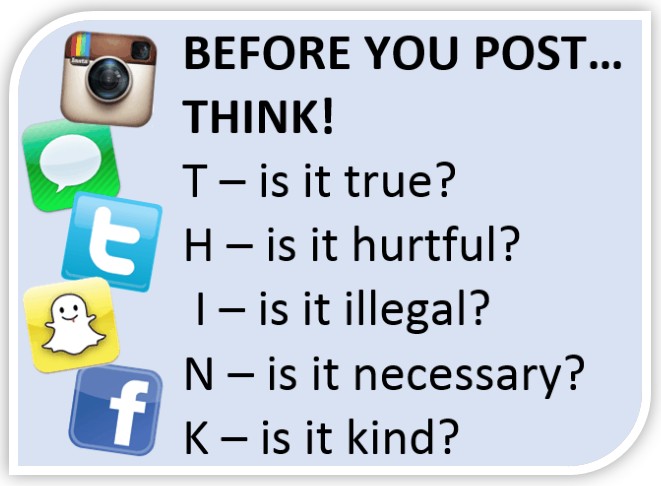February – When We Communicate
Technologies have offered many opportunities to communicate. The internet is a source of information and social connections. What used to be held to a select few, can now be used to amplify your voice. This is unlike London, England’s Hyde Park “Speakers Corner“, but an instantaneous sharing to the world of anything you post. For example, social media was the place used to gather and share information on the recent west coast earthquake that rocked the lower mainland, not the usual news channels. Social media is now the most “go to” place for both news and for connecting with friends and family (near and far). For many, there is no dividing line.
The challenge of amplication is that the quickness of our fingers is speedier than the thoughtfulness of our thinking brain (pre-frontal cortex). Sometimes it helps to use a graphic as a visual cue reminder. This is a quick way for students (and adults) to self assess whether they should or should not be posting content or consider the type of content they are posting. The acronym “THINK” is an easy one to remember. (I think I see a rap in the future – any takers?) Perhaps this can also be used as a conversation piece at home.
Click Here for a Landscape, Print Friendly THINK Poster.
Last year, a Digital Youth Summit was hosted by MediaSmarts and ICTC where they asked teens for their ideas on how to make the online environment a better place for everyone. Their comments were part of this tip sheet, Be Respectful, Patient and Kind: How Youth are Building a Better World Online. Parents might consider using this as a discussion point at home.


